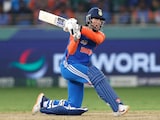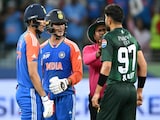The routine was the same, Monday through Friday. A man who, like generations of suburban commuters before him, had built his working life around the Metro-North timetables left the JPMorgan Chase tower on Park Avenue in New York City. He boarded his Harlem line train at Grand Central Terminal. He texted his wife: I'm on my way home.
On Tuesday evening, Aditya Tomar was expected home in Danbury, Connecticut, by 7. Seven o'clock came and went. No Aditya.
On Thursday morning at the couple's home, Tomar's mother-in-law, Dee Persaud, wept quietly as she recounted the events of that evening. "My daughter is waiting," she recalled. "She texted, 'How come you weren't on the train.' No answer."
So began 12 hours of frantic agony for Rosetta Persaud, Tomar's wife, who found out only when she called a nearby train station a few hours later that Tomar's train had crashed into a sport utility vehicle in Valhalla, New York. The collision crumpled the SUV, mangled the tracks and incinerated much of the first car of the train. It also killed her husband and four other men who were riding in that car, strangers who had lived by the rhythms of the Harlem line turned victims of the deadliest episode in the railroad's history.
Joseph Nadol, 42, also worked for J.P. Morgan, as an investment analyst. Robert Dirks, 36, was a chemistry researcher. Eric M. Vandercar, 53, was a financial executive. Walter Liedtke, 69, was a curator at the Metropolitan Museum of Art.
The driver of the SUV, Ellen Brody, 49, who also died, was a jewelry store employee from Edgemont.
Tomar's job as a senior technologist for J.P. Morgan Asset Management, which he had held for 14 months, fulfilled his longtime dream of working on Wall Street. Tomar, 41, had come from Dehradun, India, to study at MIT, his mother-in-law said. In his spare time, she said, he loved to play cricket.
"He loves to go to work in the city," Dee Persaud said. "Even though it's a hard commute - you get up early, you get home late - he loves it."
He married Rosetta on a summer day in 2005. "She got a husband, but I got a son," Dee Persaud said. "He was like an angel to our family. There was nothing too little or too big for him to help."
Robert Dirks commuted to Manhattan from Chappaqua, New York, where he lived with his wife, Christine, and two young children in a pale green house on the slope of a hill. Cracking open their front door Wednesday evening, his wife shook her head when asked about her husband.
"It's too late," she said, red-eyed "It's too late."
A scientist who studied computational chemistry at D.E. Shaw, a research company in Manhattan, Dirks made "indelible" contributions to two burgeoning fields: molecular programming and dynamic nucleic acid nanotechnology, said Niles Pierce, the professor who oversaw his Ph.D. research at the California Institute of Technology, where Dirks met his wife.
In those still-new disciplines, Dirks was a pioneer, making scientific advances that, among other applications, enabled scientists to map multiple genes inside organisms, allowing biologists around the world to study how organisms develop. Not only did he achieve experimental breakthroughs, Pierce said, but he also developed algorithms that enabled other researchers to engineer their own molecular systems.
"It's just really rare for someone to have the mind to be able to contribute in such different ways," Pierce said. After graduation, Dirks joined D.E. Shaw to tackle the long-unsolved problem of protein folding: He sought to find a way for scientists to predict a protein's shape from its sequence of amino acids.
His former student also showed flashes of inspiration on the basketball court and as a speed-chess player, Pierce recalled, and he poured himself into mentoring younger students. "Everyone was aware of his brilliance, but everyone comments on his kindness," he said.
At Joseph Nadol's home in Ossining, New York, where he lived with his wife, a novelist, and three young boys, there is a pool and a wooden play set behind his sprawling white house, which sits on a field. Neighbors recalled hearing his sons laugh as Joseph Nadol pulled them around in a red wagon, splashed with them in the pool or pelted them with snowballs.
A Harvard graduate, Nadol joined J.P. Morgan in 2001, rising to become the managing director and head of its U.S. aerospace and defense equity research group. Institutional Investor, an industry publication, had ranked him the top analyst in his area for several years running. "Joe is never afraid to take a stand," a client told the publication.
In a town whose residents tended to insulate themselves in their big homes and busy lives, Nadol was one of the few who reached out, recalled Jacqueline Archer, 51, who lives across the street. Nadol invited her family for a summer barbecue soon after they moved in.
She thought again about Nadol's children. "I hope they'll continue playing," she said. "It's, like, the perfect family."
In Danbury, Tomar's family received confirmation that Tomar had died in the crash only after his brother-in-law, Renaldo Persaud, made two trips to Westchester Medical Center to look for him.
On the phone Wednesday morning, Dee Persaud recalled, Renaldo began to cry. "I'm coming home," he told his mother. "Everybody in the hospital is accounted for." Aditya, he said, "wasn't one of them."















